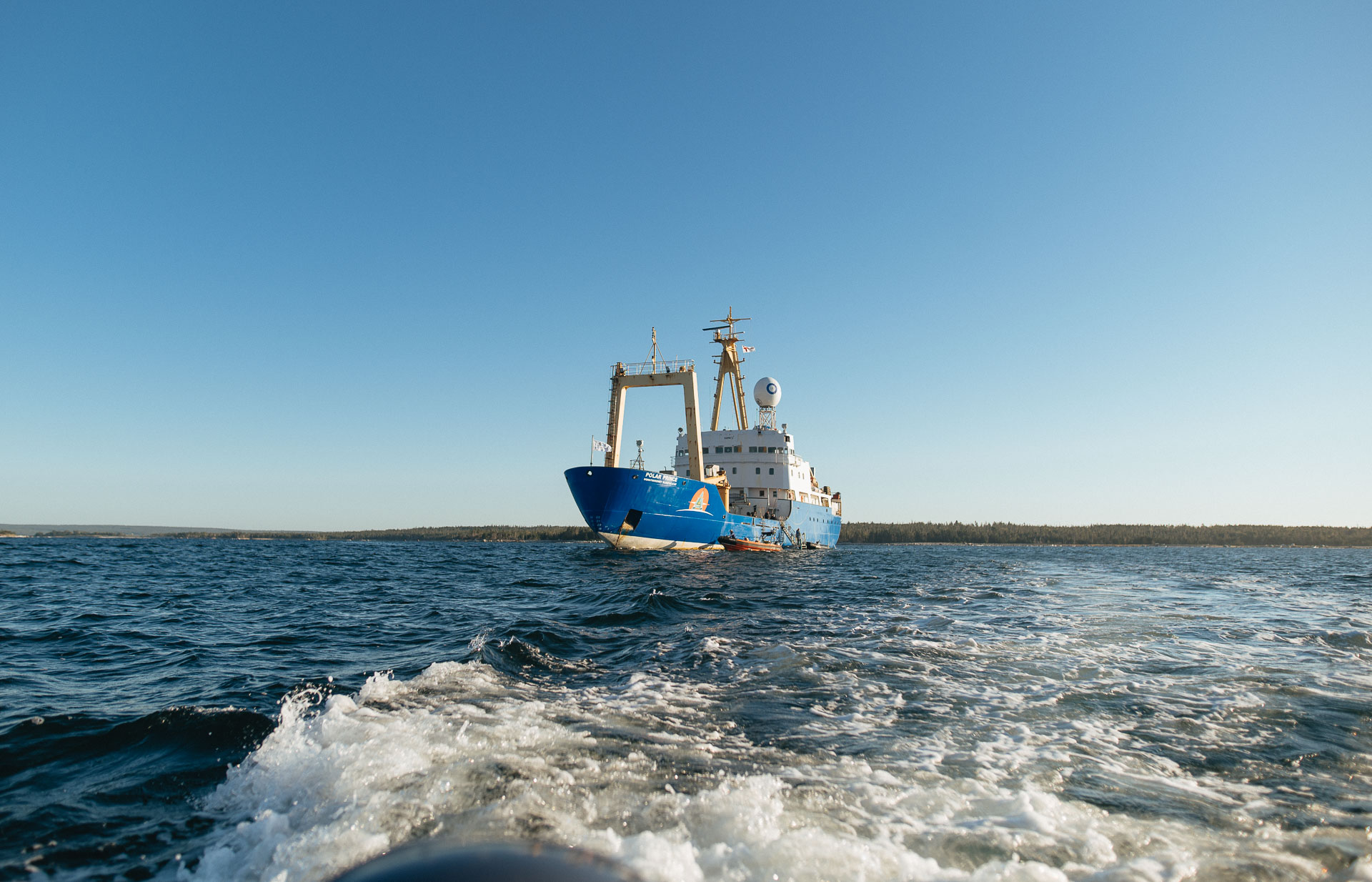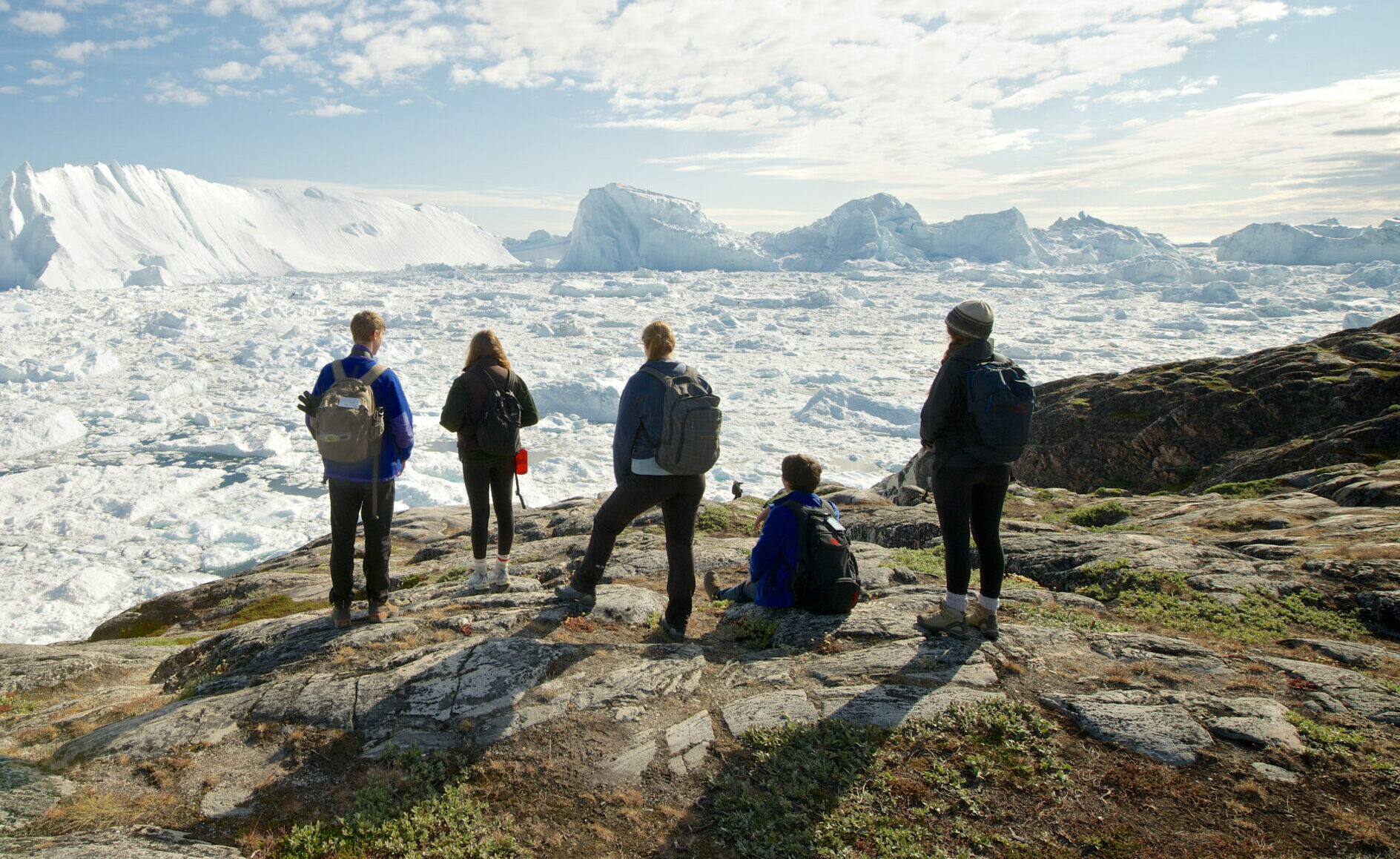2024 Innu Nation Uinipekᵁ Expedition Leg 1 Recap
The 2024 Innu Nation Uinipekᵁ Expedition embarked on its first leg from Sheshatshiu, Labrador with young Innu participants welcomed aboard the MV Polar Prince for an enriching journey. This marked the start of an adventure defined by learning and connection—among participants, between generations, and across disciplines. The expedition’s mission centres on collaboration, capacity building, and the integration of traditional Innu knowledge with Western science. In that spirit, the Innu Nation is collaborating with research scientists from Huntsman Marine Science Centre, Fisheries and Oceans Canada, Canadian Wildlife Service, and the Canadian Museum of Nature on this expedition.
Bridging Knowledge
Participants quickly adapted to expedition life, joining the science teams for on-the-water, hands-on experiences. The scientific activities conducted during Leg 1 contribute significantly to the Innu Nation’s Marine Monitoring and Stewardship Program. With the help of video- and sensor-equipped underwater drones or Remote Operated Vehicles (ROVs) and the expedition dive team, participants helped conduct surveys of marine life, gathering crucial data on the region’s ecological tapestry.

The Innu Nation’s Marine division heavily employs ROV technology, with Guardians trained to operate these devices to monitor ecological properties of marine areas. Innu Marine’s ROV pilots collect data and video to inform the Nation’s marine management strategies. Other tools the Innu Nation used onboard this floating classroom include environmental DNA (eDNA) collection and CTD (conductivity, temperature, and depth) casts, which also provide insights into the region’s marine biodiversity.
On land, the youth learned from Tshenut (Elders), Innu Guardians, and educators about the ecology and ancestral history of the areas we visited. The blend of ocean science and traditional knowledge underscores the expedition’s core mission: empowering the next generation through education and stewardship.
A Platform for Sharing
Innu Parks superintendent Jack Penashue and lead Guardian Jimmy Nuna led a workshop on the historical, ecological, and cultural importance of the Akami-Uapishkᵁ-KakKasuak-Mealy Mountains National Park Reserve, the largest national park in eastern Canada. Co-managed by the Innu Nation, the Nunatsiavut government, and Parks Canada, Jack emphasized the importance of protecting the land and educating the world about its significance.
“We worked hard with our partners to protect this land,” Jack explained. “We are educating the world on how important it is to protect the land and the Earth.”

Jack also highlighted the role of young Innu as future leaders and ambassadors for implementing and sharing the Innu context.
“Akamiu-Uapishku is a platform for sharing Innu ways of life and culture,” he said. “We need more Innu scientists and researchers to educate and facilitate the next generation.”
Jimmy, a source of inspiration for the youth, echoed these sentiments.
“I feel like I have the best job ever,” Jimmy told the group. “I love being on the land, it really grounds me. It’s so important. We come from the land, we belong on the land.”
Savin Gregoire, a 2023 Uinipekᵁ alum and recent addition to the Guardians program, shared his transformative experience from last year’s expedition.
“Going out on the land, on the water, collecting data, ROVs, setting traps, doing the work we do, I just love it. It’s the best job,” he said.
It was at the park that participants met with Her Excellency the Right Honourable Mary Simon, the first Indigenous Governor General of Canada. Innu youth Leanne Rich presented the Governor General with Innu Nation flags and toques bearing the expedition logo she designed.
Hands-on Marine Science
Participants engaged in various marine science activities, including operating ROVs, deploying baited drop cameras or BRUVs, and assisting the dive team.
The divers, with members from the Canadian Museum of Nature and the Huntsman Marine Science Centre, would survey the underwater environment before surfacing to hand off samples to Innu youth to sort. Despite frigid temperatures, marine life flourished, and identifying specific hotspots was crucial for the Innu Nation’s marine planning initiatives. These hands-on experiences also reinforced the expedition’s educational goals.

CTD casts, phytoplankton tows, and eDNA collection further contributed to the Innu Nation’s Marine Monitoring and Stewardship program. Working with Fisheries and Oceans Canada to collect environmental DNA samples helps Innu Nation monitor marine biodiversity and enhance their understanding of the species inhabiting their marine areas. Meantime, Innu Marine uses CTD casts to measure the conductivity, temperature, and depth of seawater, providing valuable data on the physical properties of the ocean. This helps in understanding marine environments and informs conservation and climate change research.
At the Gannet Islands Ecological Reserve, participants had an exhilarating day guided by wildlife biologist Regina Wells, recording bird sightings and experiencing the interconnectedness of marine ecosystems.
Lifelong Learning Journey
The expedition concluded the first leg with the deployment of sensor-equipped drifters, which help gauge the effects of climate change on ocean currents and inform the Innu Nation’s marine emergency preparedness planning. Participants gave each drifter an Innu-aimun name: Messinaku (Fish Master), Shukain (wave), Atshetshuku (iceberg), Apau-ana Kutshash (flying squirrel), Nutin mak nipi (wind and water), and Shipeku Kanataut (Green Hunter – in honour of expedition leader and SOI founder, Geoff Green). These drifters, each with its respective name written on it, mark the beginning of a yearlong journey at sea but also commemorate the lifelong learning journey these Innu youth continue on.

Inspiring Futures
“To have this opportunity for the youth, I find it gives them that first step to, you know, think about moving ahead with their career opportunities, or to think about other choices in what they want to do,” said Innu Parks Outreach Coordinator, Marie Soleil Penashue.
The expedition provided hands-on opportunities for Innu youth to explore marine sciences and potential career pathways. Many participants came away from the journey inspired to pursue further education and careers in science and research. One youth hopes to attend the Fisheries and Marine Institute where she’s interested in pursuing maritime studies or perhaps an ROV technician diploma.

“It’s the solution that we’re creating, being on the land,” Marie Soleil said, emphasizing the importance of creating more opportunities like this one for Innu youth. “When you’re out here you just think about, oh, what can we do next?”
Jack’s closing words resonated with participants.
“To all you Innu children, Innu youth, and young Innu women and men, you are important. This is your journey. This is a step. Now it’s time to take the next step into your future.”





